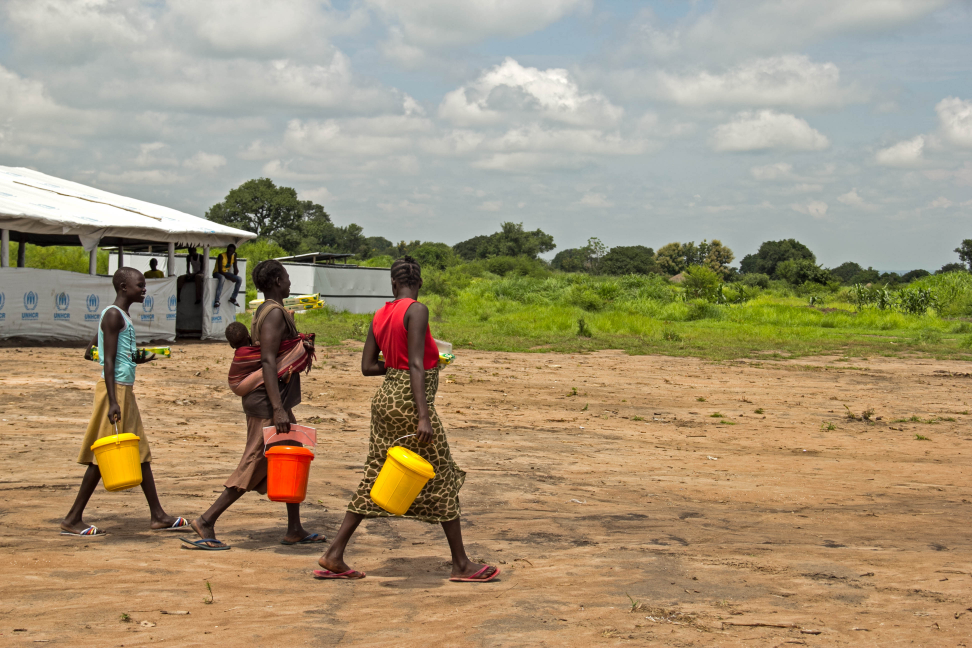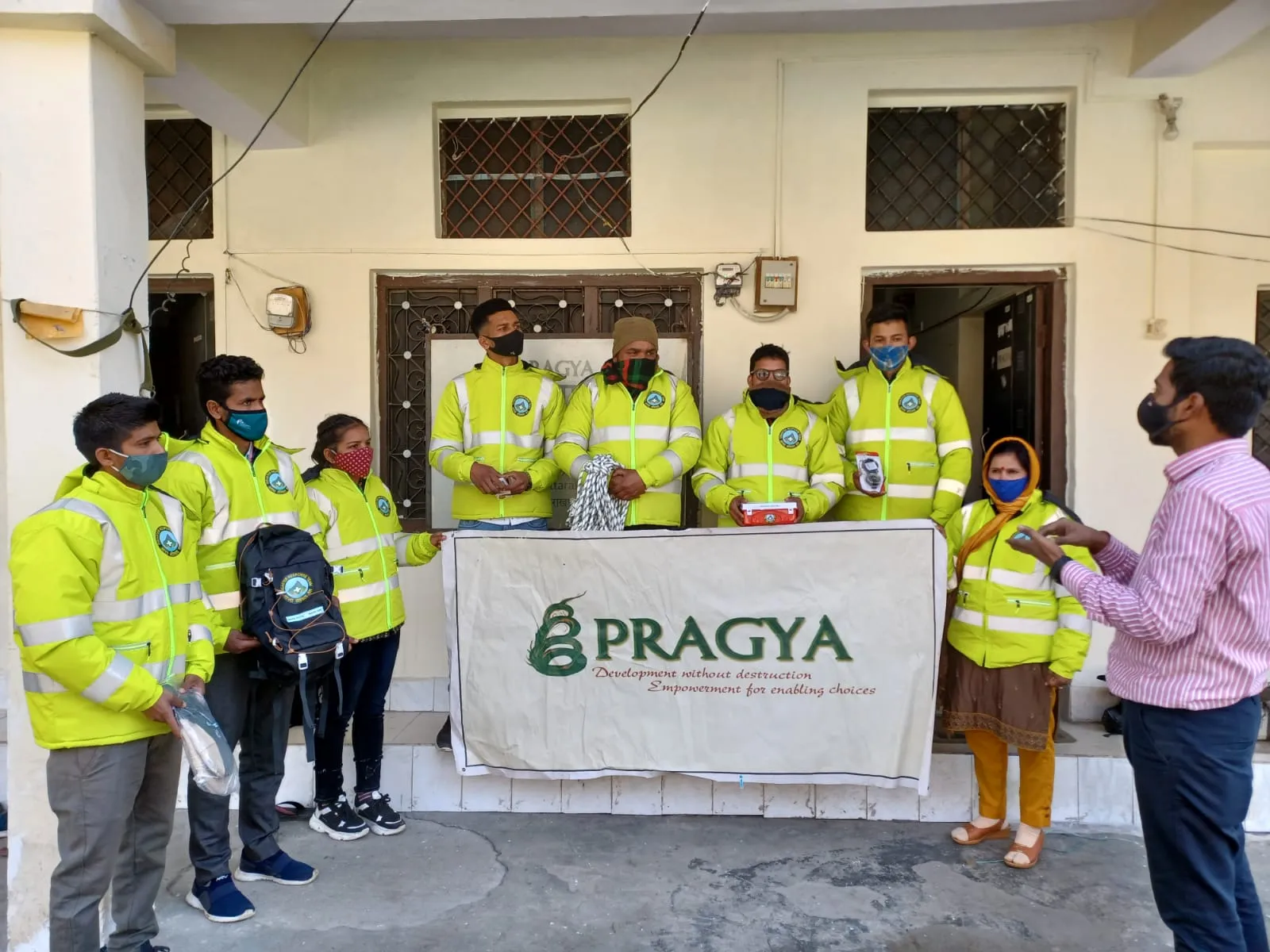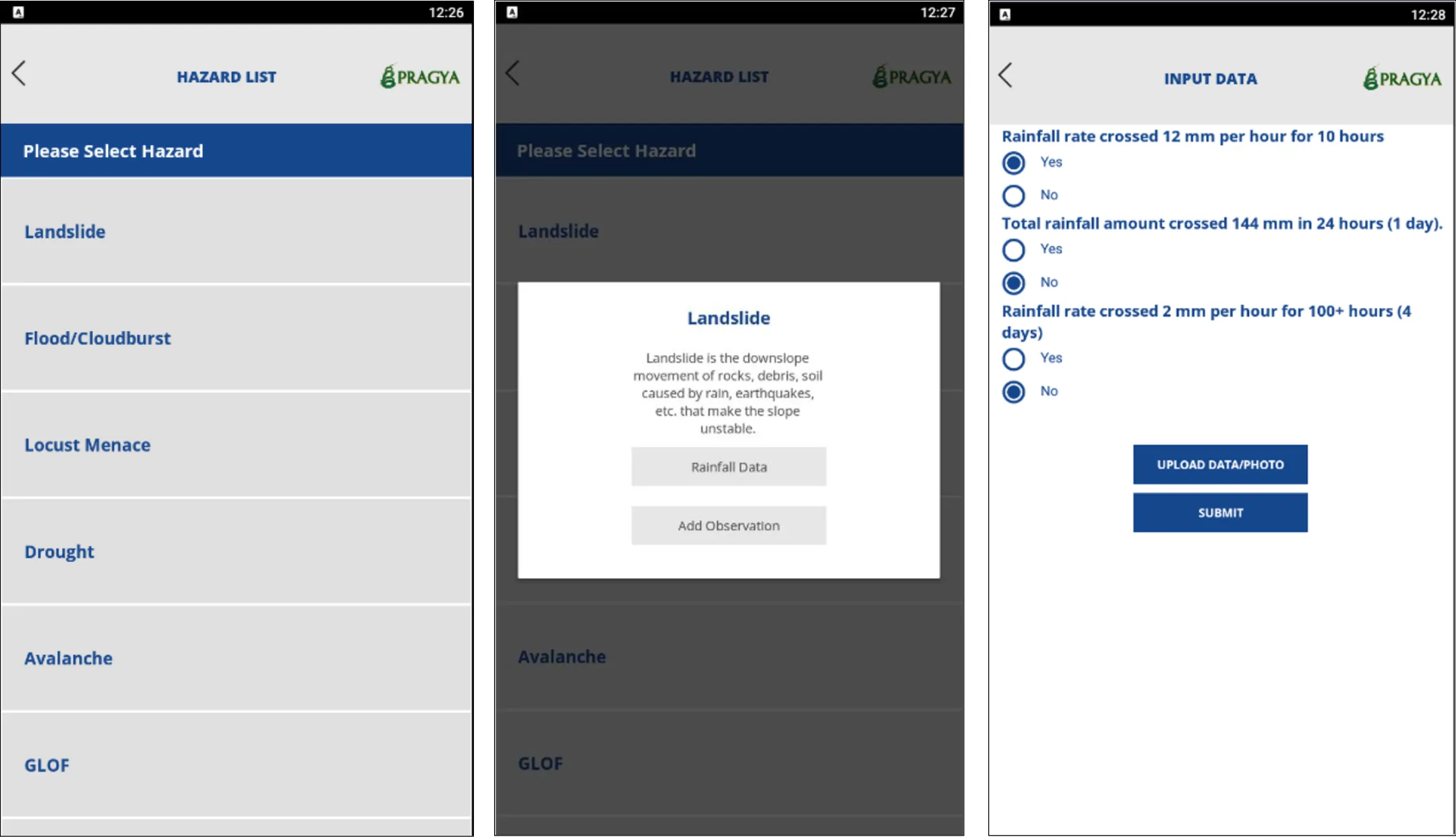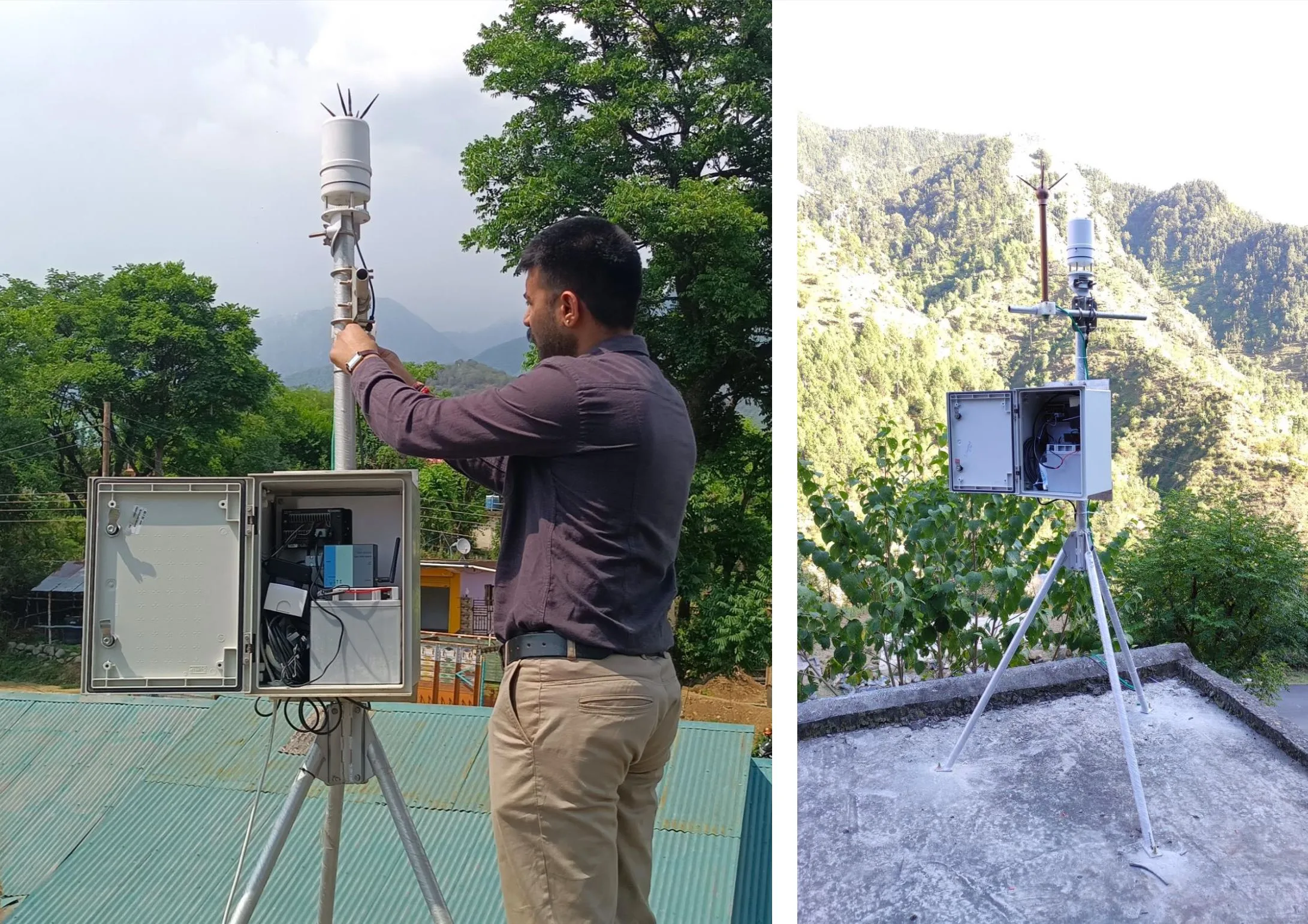Improving Early Warning in the Remote Himalayas

In our first blog post as a member of HIF’s Journey to Scale 2021-2022 cohort, we introduced our innovation, DMS Himalaya, which enables remote and marginalised Himalayan communities to contribute to disaster management at the local level, while enabling greater community-state collaboration in one of the world’s most disaster-prone regions. In this update, we’re going to take a closer look at the innovation’s early warning system, which combines a citizen science programme of grassroots weather, hydrology, and hazard monitoring – facilitated by the DMS Himalaya App – with a network of automated weather monitoring stations. Together, these aim to fill data gaps in remote areas, supporting existing data collection by authorities responsible for early warning.
Citizen Science and the DMS Himalaya App
DMS Himalaya’s grassroots observational data collection is led by Disaster Response Teams recruited from within local communities. Made up of local youth trained by Pragya, the National Institute of Disaster Management (NIDM), and the State Disaster Response Force (SDRF), the Teams are also responsible for: assisting in community evacuations, acting as first responders in emergencies, and reporting needs post-disaster. As early warning observation nodes, the Teams are engaged in the disaster management cycle from the start.

Observations by the Teams follow agreed schedules and are entered into the DMS Himalaya App. Data inputs within the app are simplified to ensure standardised and straightforward indicators, tracking basic hydrometeorological and geological changes appropriate to grassroots monitoring, such as stream flow measurements using gauges, observable land and structure shifts and deformations, or rain and snowfall measurements, to name a few. The indicators are selected to anticipate the most frequent and high-impact hazards in the Himalayas: rapid onset hazards such as landslides, floods/ cloudbursts, earthquakes, avalanches, and glacial lake outburst floods and slow onset hazards such as drought and desertification. These were catalogued as part of regional hazard profiles developed by Pragya via consultations with experts as well as village level meetings and vulnerability mapping, and build on HIF-supported research and development dating back to 2012. This ensures that data input is both codified for centralised use and appropriate to the hazards within a given area.

Automated Weather Monitoring Stations
DMS Himalaya’s automated weather monitoring stations are equipped with a low-maintenance and low-cost, all-in-one meteorological sensor designed for remote areas with extremely harsh climates (Model: Campbell-Scientific ClimaVUE50). The unit has no moving parts, and the design is tailored to harsh conditions including heavy winds and precipitation, and very low temperatures. Data storage and transmission were also key considerations, with the unit allowing for direct and automated transmission via cellular SIM, as well as storage and cumulative transmission following a loss of signal. The units are also calibrated to ensure the data meets the standards of the Indian Meteorological Department. Any inputs that register urgent concerns or surpass given thresholds are flagged by the application and relayed for review by local disaster management units and partner technical institutes.
The stations are being installed by Pragya and Campbell-Scientific, who have experience with similar installations in the Himalayas. Each unit measures a broad range of parameters, allowing for the gathering of different data appropriate to a region’s hazard profile: air temperature, relative humidity, vapor pressure, barometric pressure, wind (speed, gust, and direction), solar radiation, precipitation, and lightning strike (count and distance). The data is transmitted to Pragya and other government-authorised servers to provide a more detailed picture of weather patterns in these remote areas. The data from the stations, grassroots inputs into the DMS Himalaya App, and government data can be reviewed and cross-checked in real time, ensuring threats are sufficiently validated and minimising false warnings.

With the help of technology, DMS Himalaya is building capacity in remote areas that can inform and support disaster management efforts. Its early warning system improves the timeliness and detail of data gathered to assess potential hazards, while enabling vulnerable communities to better understand and prepare for the risks they face. The potential is great – from the start the programme has been designed with replicability in mind, focusing on core functions that can be adapted to different regions and hazard profiles. The programme is currently being deployed in partnership with five states/ union territories across the eastern, central, and western Indian Himalayan regions, with trials to generate evidence of its impact, cost-effectiveness, and adaptability.
Stay updated
Sign up for our newsletter to receive regular updates on resources, news, and insights like this. Don’t miss out on important information that can help you stay informed and engaged.
Related articles
.png)


Explore Elrha
Learn more about our mission, the organisations we support, and the resources we provide to drive research and innovation in humanitarian response.